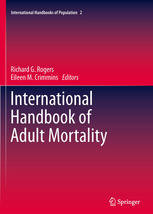

Most ebook files are in PDF format, so you can easily read them using various software such as Foxit Reader or directly on the Google Chrome browser.
Some ebook files are released by publishers in other formats such as .awz, .mobi, .epub, .fb2, etc. You may need to install specific software to read these formats on mobile/PC, such as Calibre.
Please read the tutorial at this link: https://ebookbell.com/faq
We offer FREE conversion to the popular formats you request; however, this may take some time. Therefore, right after payment, please email us, and we will try to provide the service as quickly as possible.
For some exceptional file formats or broken links (if any), please refrain from opening any disputes. Instead, email us first, and we will try to assist within a maximum of 6 hours.
EbookBell Team

0.0
0 reviewsThis handbook presents a comprehensive and up-to-date overview of unprecedented substantive, theoretical, methodological, and statistical developments and insights, and an in-depth examination of trends and patterns, in adult mortality around the world. With over two dozen chapters and more than fifty authors, this volume draws from top international mortality experts to provide one of the best overviews of life expectancy extant. The handbook documents remarkable gains in life expectancy, which stand out as one of the most important accomplishments of the twentieth century. Individuals in more developed countries can expect to live longer now than ever before, especially the Japanese, who enjoy record-setting life expectancies. The book also explores unfortunate declines in life expectancy in selected countries brought on by such factors as the following: infectious diseases; accidents, suicides, and homicides; and political and economic conflict and turmoil. This book synthesizes the wealth of mortality information available, clearly articulates the central findings to-date, identifies the most appropriate datasets and methods currently available, illuminates the central research questions, and develops an agenda to address these research questions. The authors carefully examine central factors related to mortality, including health behaviors, socioeconomic status, social relations, biomarkers, and genetic factors. The book will prove especially relevant to researchers, students, and policy makers within social and health sciences who want to better understand international trends and patterns in adult mortality.